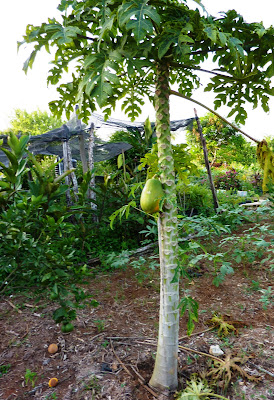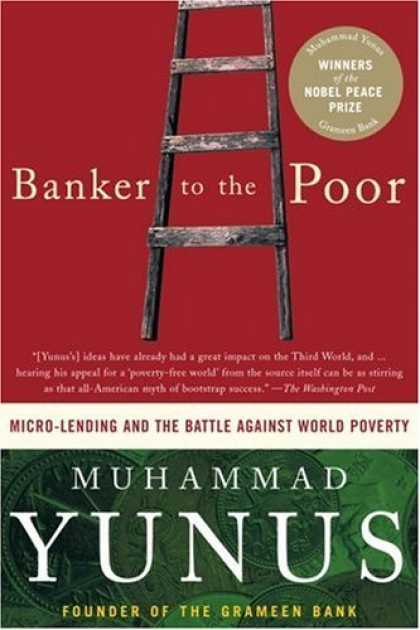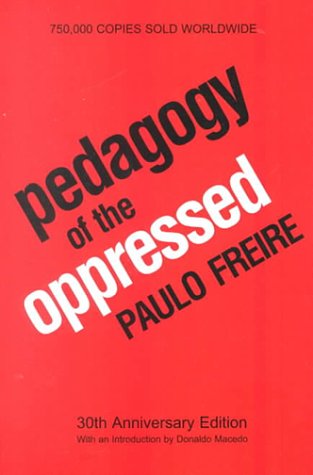 Today, as I walked home from Polyground Primary School, I met two little boys who gave me a tour of all the trees in the neighborhood. One of the many wonderful things about Jamaica is that most trees here bear edible fruits. The biggest of them all is the Jackfruit which is about the size of a watermellon but grows from thick stems right out of the trunk of the tree. The inside of a jackfruit is rows of flower-like fruit whichs tastes like a sweeter version of cantelope and smells like a combination of gym sock and flowers.
Today, as I walked home from Polyground Primary School, I met two little boys who gave me a tour of all the trees in the neighborhood. One of the many wonderful things about Jamaica is that most trees here bear edible fruits. The biggest of them all is the Jackfruit which is about the size of a watermellon but grows from thick stems right out of the trunk of the tree. The inside of a jackfruit is rows of flower-like fruit whichs tastes like a sweeter version of cantelope and smells like a combination of gym sock and flowers. Pawpaw (or papaya) also grows straight out of the tree trunk. It has a distinctive taste that you either love or hate. I can only eat it dried. Behind this Pawpaw tree shade cloth is spread overhead of some plants. Greenhouses in Jamaica are designed to keep the sun and heavy rains off the plants and usually employ shade cloth.
Pawpaw (or papaya) also grows straight out of the tree trunk. It has a distinctive taste that you either love or hate. I can only eat it dried. Behind this Pawpaw tree shade cloth is spread overhead of some plants. Greenhouses in Jamaica are designed to keep the sun and heavy rains off the plants and usually employ shade cloth. This is a cashew tree. As the boys tried to point out what a cashew pod looked like the neighbor's dog jumped at the fence and sent them running back down the hill.
This is a cashew tree. As the boys tried to point out what a cashew pod looked like the neighbor's dog jumped at the fence and sent them running back down the hill. Breadfruit is a common breakfast food in Jamaica. The most common way of cooking it is to cut an x in the bottom and roasting it over an open flame. A Jamaican might be called a roast breadfruit which is black on the outside but white on the inside.
Breadfruit is a common breakfast food in Jamaica. The most common way of cooking it is to cut an x in the bottom and roasting it over an open flame. A Jamaican might be called a roast breadfruit which is black on the outside but white on the inside. The boy on the left climbed this apple tree and picked me the sweetest, juiciest Otaheite apple I've had yet.
The boy on the left climbed this apple tree and picked me the sweetest, juiciest Otaheite apple I've had yet.
 This is what Ackee looks like growing on the tree (from the Jamaican national dish ackee and saltfish). Ackee is by far the most common tree in Ewarton. The second most common trees are orange trees. Lorna usually squeezes a gallon of orange juice a week from the trees in our backyard.
This is what Ackee looks like growing on the tree (from the Jamaican national dish ackee and saltfish). Ackee is by far the most common tree in Ewarton. The second most common trees are orange trees. Lorna usually squeezes a gallon of orange juice a week from the trees in our backyard.
My favorite Jamaican fruit is mango. Zoom in on the picture to see if you can find them!

Another very common tree is the coconut or jelly tree. One of the little boys informed me that when they're whole you call them jelly and that the insides are called coconut. One of the best ways to rehydrate on a hot day is to buy a frozen jelly from the jelly man and to drink the coconut water.

They showed me a grapefruit tree, a tamarind tree, an almond tree, and a cherry tree. The cherry tree was laden with red cherries but I couldn't see them until I got within five feet of them. They also pointed out the green banana tree. While they look like smaller versions of the yellow bananas we see in the grocery store, these bananas will never ripen. Instead, they are peeled (make sure to coat your hands in oil or they will stain you) and served boiled.
 I had a fun walk home and learned much more than I would have without my new friends!
I had a fun walk home and learned much more than I would have without my new friends!




















 Banker to the Poor
Banker to the Poor A Walk Across America
A Walk Across America Catch 22
Catch 22 Dreams from My Father
Dreams from My Father Against the Grain: How Agriculture has Hijacked Civilization
Against the Grain: How Agriculture has Hijacked Civilization Born to Run
Born to Run Deep Economy
Deep Economy A Long Trek Home
A Long Trek Home Lord of the Rings: Return of the King
Lord of the Rings: Return of the King Black Like Me
Black Like Me Guns, Germs, and Steel
Guns, Germs, and Steel White Teeth
White Teeth Water for Elephants
Water for Elephants Lord of the Rings: The Two Towers
Lord of the Rings: The Two Towers Pedagogy of the Oppressed
Pedagogy of the Oppressed A Walk in the Woods
A Walk in the Woods A Separate Peace
A Separate Peace Seize the Day
Seize the Day The Ugly American
The Ugly American The Amazing Adventures of Kavalier & Clay
The Amazing Adventures of Kavalier & Clay Going Home to Teach
Going Home to Teach  The Color Purple
The Color Purple  The Dead Yard: Tales of Modern Jamaica
The Dead Yard: Tales of Modern Jamaica  Brief Interviews with Hideous Men
Brief Interviews with Hideous Men  Zen and the Art of Motorcycle Maintenance
Zen and the Art of Motorcycle Maintenance  East of Eden
East of Eden  Walden
Walden  The Omnivore's Dilemma
The Omnivore's Dilemma  Earth's Climate: Past and Future
Earth's Climate: Past and Future  You Can Farm: The Entrepreneur's Guide to Start and Succeed in a Farming Enterprise
You Can Farm: The Entrepreneur's Guide to Start and Succeed in a Farming Enterprise